Some of the links in this post are affiliate links, which means I may earn a small commission if you choose to make a purchase—at no extra cost to you. I only share products I personally use, love, or truly believe in.
What if the way you show up today could change the next ten years of your life?
Obsessing over the big things? Careers, health goals, five-year plans. Yes, me too. It’s FUN to think about the future. But the truth? Your future is being shaped by tiny choices you’re making right now. Not next month. Not after things “calm down.”
Mindful living means waking up to the reality that your daily habits are your life. And when you live with intention, you stop running on autopilot and start creating a future you’re actually excited about. So, yes, it is fun to think about the future, but make sure you’re being intentional about your thoughts.
Let’s talk about why mindful living isn’t just for meditators and therapists—and how it can completely change your health, happiness, and the way you experience life. Grab a snack, light a candle, and don a cozy blanket! This is a long one!
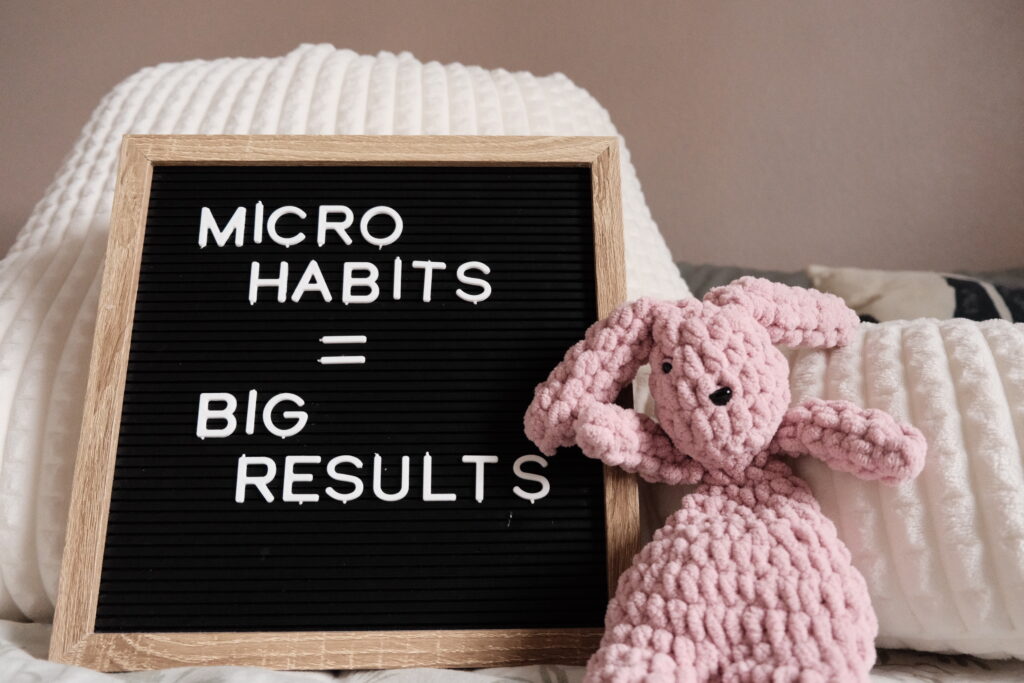
Micro Habits = Major Results
Let’s talk about the tiny things—because they’re actually the big things.
Most of us think major transformation requires major effort. But the truth? It’s the micro habits—the small, often unnoticed, seemingly “unimportant” choices you make day after day—that quietly shape your future. Think about your diet, the foods you eat every day, this makes up your physical health and your mental health!
Every time you choose to breathe before reacting…
Every time you drink water instead of another soda…
Every time you pause and ask yourself, “What do I actually need right now?”—
That’s mindful living in action. That’s what rewires your health, your stress response, your energy, and your entire life.
Doing this takes, well, intention. It doesn’t come naturally. However, you, too, can learn to stop and pause. Eventually, it’s second nature!
How Micro Habits Build the Future:
- Mindless snacking today? It stacks up into sluggish digestion, unstable blood sugar, and future burnout.
- Unmanaged stress today? It teaches your body to stay in fight-or-flight. Hello, fatigue, inflammation, and anxiety.
- Scrolling instead of connecting? That’s how relationships drift.
- “I’ll move tomorrow” mindset? It slowly chips away at strength, metabolism, and mood.
The sneaky thing is that none of these choices feel like a big deal in the moment. They feel normal. But when you zoom out 6 months, 5 years, or 20 years? They tell a whole story.
And here’s the best part: every single micro habit is an opportunity to choose again.
When you practice intentional living, you start noticing those small pivot points. You build self-awareness muscle. You realize that this tiny moment is powerful. That your breath, your bite, your choice to walk instead of scroll—that’s where transformation lives.
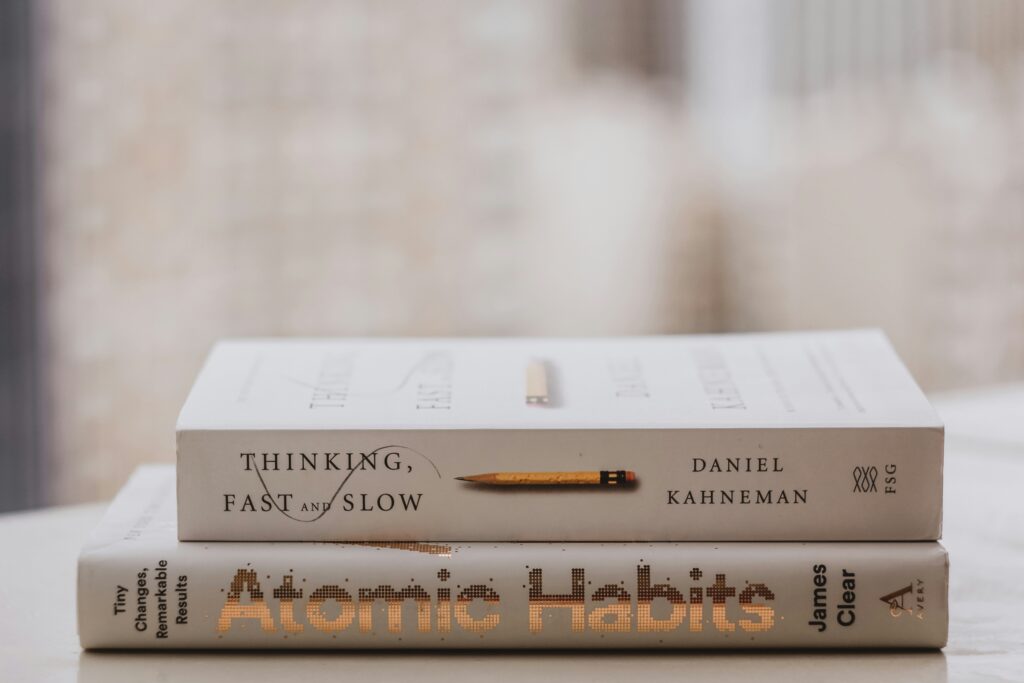
Let’s Make This Tangible:
Mini Mindful Habit Reframes:
- “I’ll just grab a snack” → “What would nourish me right now?”
- “I’m too tired to go for a walk” → “What movement would feel good for 5 minutes?”
- “I’ll text them later” → “Can I take 30 seconds to connect now?”
- “It’s just one more episode” → “Will this help me feel better tomorrow?”
These aren’t rules. They’re anchors. They help bring you back to the kind of life you want to be living. They help you shift out of autopilot and into alignment.
Why This Matters:
When we’re not present, we miss out on so much.
When we are present, we reclaim our power.
And that’s the whole point of mindful living—not to be perfect, but to be awake enough to choose the things that align with who you want to become.
Because over time, those tiny choices become your default.
They become your habits.
They become your life.
👉 Related post: Invest in Your Holistic Health Today
How Mindful Living Changes Your Body—Literally
I don’t mean metaphorically elevating yourself to a higher power, people. Mindful living literally changes the way your body works—at the cellular level.
I used to treat my minds and body like separate to-do lists: fix my stress over here, improve my gut over there, and oh yeah—sleep better somehow. But here’s the wild truth: your body is listening to how you live. Every. Day.
And when you start practicing intentional living—when you slow down, breathe, chew your food, notice your emotions instead of numbing them—your body stops being in constant defense mode. Instead, it starts to repair. Stay with me, now.
The Fascinating Biology of Presence:
Let’s nerd out for a second because this is really cool.
1. Your Cells Actually Age Slower
Chronic stress wears down your telomeres—those little protective caps at the ends of your DNA strands. Short telomeres = faster aging, more disease.
But mindful living? Studies show it slows the shortening of those telomeres (Epel et al., 2009). Translation: fewer wrinkles, better cellular repair, and a longer, healthier life. Thank goodness!
2. Mindful Eating Heals Your Gut
When you eat in a rush or while distracted, your body doesn’t fully digest your food. It doesn’t even think it’s mealtime.
But when you pause, chew slowly, and actually taste your food, your digestive system turns on. Mindful eating reduces bloating, improves nutrient absorption, and even lowers inflammation.

3. Your Heart Gets a Break
Intentional breathing—slowing your inhales and elongating your exhales—activates the parasympathetic nervous system (your “rest and digest” mode).
This lowers your blood pressure, slows your heart rate, and protects you from long-term cardiovascular issues. It’s like medicine you can access anytime, anywhere. For free.
I LOVE the box breathing technique. Breathe in deeply for 4 seconds, hold for 4, breathe out for 4, hold for 4, and so on. This one is a gamer changer for stressful moments. Really good for bedtime, too.
4. Your Brain Becomes a Better Friend
Mindfulness isn’t just calming—it’s rewiring. Regular practice strengthens the prefrontal cortex (responsible for focus and decision-making), while calming down the amygdala (your inner panic button).
Result? Less emotional reactivity, better self-regulation, improved memory, and sharper focus (Tang et al., 2015).
When You Live with Intention, Your Body Responds
Here’s what most people don’t realize: your body’s always doing one of two things—healing or defending. Bodies are intended to keep us alive. They act like it.
When you’re overwhelmed, overstimulated, under-rested, and racing through life, your body is bracing for impact. It’s like “Holy mackerel, I guess I’ll just go into survival mode now.”
When you slow down, breathe deeply, eat consciously, and respond instead of react? Your body goes, “Ohhh, this is nice.” And that’s when the real healing begins.
Not Sure Where to Start? Try This:
One-Minute Nervous System Reset:
- Inhale slowly for 4 counts
- Hold for 4
- Exhale for 6
- Repeat 2–3 times
- Feel the shift
Seriously. That simple breath is a biological signal to your body that it’s safe. That you’re choosing presence. That you’re not just surviving today—you’re participating in healing it.
🛒 If you want some extra insurance for keeping those telomeres long and strong, try this.

Stop the Spiral: Beat Decision Fatigue with Mindful Living
You know that moment—5 p.m., you’re staring into the fridge like it’s has all the answers, wondering what you even feel like eating… and somehow end up with a sad handful of chips? That, my friend, is decision fatigue. And, my friend, that was me today (I need to go grocery shopping).
It’s not that you’re bad at making decisions. It’s that you’ve already made hundreds of them today:
- What to wear
- What to post
- What to say in that email
- What to make for lunch
- Whether to work out or not
- Which podcast to listen to
- Whether you should wash your hair today or stretch it one more day (we’ve all been there, let’s be real)
All those little choices chip away at your mental bandwidth. And when your brain gets tired, it defaults to the easiest, fastest option—which usually isn’t the most intentional one. Sigh, yes, those handful of chips probably weren’t the best decision, but they were mighty tasty!
Why Decision Fatigue Happens
Your brain is wired to conserve energy. Every decision, no matter how tiny, uses up glucose and willpower. Eventually, your internal “CEO” clocks out, and guess who takes over? Your inner toddler. That’s when the mindless scrolling, impulsive snacking, and “screw it, I give up” vibes sneak in.
You feel foggy.
You make choices that don’t align with your goals.
You numb out instead of checking in.
You overcommit because you can’t think straight.
But wait! You can skirt around this. Keep reading!
How Mindful Living Interrupts the Spiral
When you live mindfully, you slow the pace of your choices. You notice the fork in the road before barreling past it. You pause. You breathe. You ask: “Is this decision aligned with who I want to become?”
You don’t have to overanalyze every step—you just have to stop running on autopilot. Sometimes, it’s okay to reach for the handful of chips or skip leg day. If that’s what you need to reset, do it. Just make sure to try, try again.
Here’s What Happens When You Bring Intention Back In:
You get clear on your values: decisions become quicker and easier.
You build self-awareness: you notice when you’re hungry vs. emotional.
You protect your mental energy: you stop trying to do all the things.
You trade overwhelm for calm: because less noise = more clarity.
Simple Ways to Beat Decision Fatigue
Try these tiny but powerful shifts:
Make fewer choices
Simplify your wardrobe. Meal prep on Sundays. Put your go-to healthy breakfast on autopilot. Fewer decisions = more energy for the ones that count. I love this step. Breakfast? Smoothie. Clothes? A capsule wardrobe where all the pieces match.
Create rituals instead of relying on motivation
Morning routines, wind-down habits, workout windows—these aren’t restrictions, they’re your decision-making life rafts. Humans love love love routine. Make some!
Pause before the yes
Before you agree to anything (even brunch), ask:
“Does this support my peace?”
“Will future-me feel grateful or drained?”
Eat with awareness
Don’t eat because it’s there. Eat because your body asks. That’s intentional nourishment—and it’s so much more satisfying than inhaling trail mix while doom-scrolling. This is sad, but true.
Make a “Do Less” List
Seriously. What can you not do today? Mindful living is as much about subtraction as it is about addition. Ask yourself what you can do today and what can wait for tomorrow. The “stuff” to get done will be there whether you do it right away or not. Plan it out.
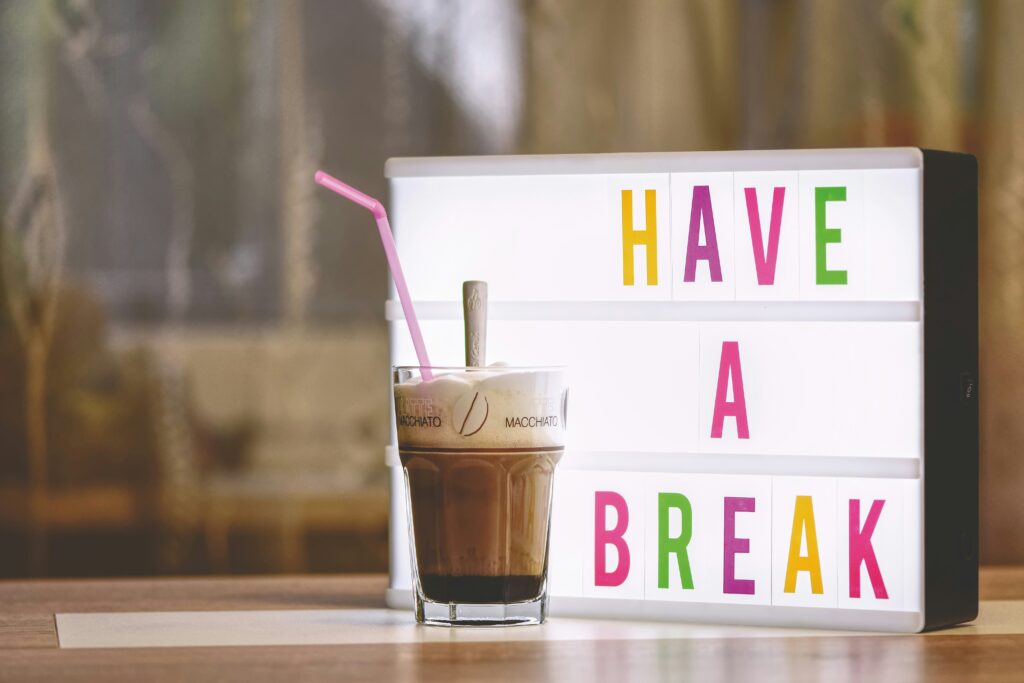
Bonus: The 5-Second Rule (Wohl-ified)
Next time you feel your brain fog rolling in and your instinct is to escape into TikTok, try this:
- Stop
- Take a full breath (box breathing!!)
- Ask:
“What do I really need right now?”
“Is this decision a reaction or a response?”
“Will this bring me closer to how I want to feel?”
You’ll be amazed at how often the answer is something grounding, not distracting. That’s the power of intentional living.
👉 Related post: Use Your Thoughts for Intentional Living
Mindful Relationships: Be There for the People Who Matter
Let’s be honest—we’re more connected than ever… and somehow more disconnected than ever, too. I’m guilty of texting the person in the same room as me. Whoops!
We text while we talk. We nod while secretly drafting tomorrow’s to-do list in our heads. We’re physically with people but mentally on five tabs, two emails, and a grocery list.
Studies show that poor relationship quality and social disconnection increase long-term risk of depression, anxiety, and even early mortality (Holt-Lunstad, Smith, & Layton, 2015). That means your health is literally tied to your presence in relationships.
This isn’t a guilt trip (I’m sure we all guilt ourselves enough as it is)—it’s about awareness.
Mindful living isn’t just about your solo wellness journey—it’s about how present you are in the moments that matter with the people who matter. We need people to be people!
Because the truth is: presence is the love language nobody talks about.
What Happens When We’re Not Present?
When we live in constant distraction mode, it shows up in our relationships like this:
- Your partner feels unseen (even if you’re sitting right next to them)
- Kids get the message that screens matter more than their stories
- Friends feel like an afterthought because you’re “always busy”
- Communication gets snippy, strained, or just… surface-level
And if we’re being really honest, we miss out too.
We miss the connections, the chance to laugh, the opportunity to help someone.

What Does a Mindful, Intentional Relationship Actually Look Like?
It’s not about hours of deep talks and staring into each other’s eyes like a 90s rom-com (though hey, go for it if that’s your vibe). It’s about choosing to be fully there—in the small, normal, beautiful moments.
Here’s what intentional living in relationships looks like:
Pause before reacting.
Let someone finish their thought without jumping in.
Put the phone down on purpose, not just when it dies.
Show up—even when you’re tired—because presence is a gift.

Join today and receive tips, tricks, and more!
Try These Mindful Relationship Habits:
1. Eye contact is underrated.
Looking someone in the eyes when they speak creates connection—quickly. It says, “You matter to me.” Try it with your partner, your kid, your barista. It’s electric. I don’t recommend staring at them, though, you may freak them out a bit. Also, actually look into their eyes. Not their nose or forehead (they can tell).
2. Give the gift of your full attention.
When someone talks to you, put your phone down, face them, and just listen. Not to reply. Not to win. Just to witness. Mimicking their body language shows support and attentiveness.
3. Say one kind thing a day.
Appreciation softens everything. A genuine “thank you for cooking dinner” or “I love the way you laugh” goes further than you think. When giving praise, get real specific, like, “I loved the way you picked up all the clothes on your floor and put them into the hamper” instead of, “Good job cleaning.”
4. Make sacred space—even if it’s 10 minutes.
No phones. No multitasking. Just you and your person. Morning coffee chats, bedtime debriefs, a walk around the block—protect that space like it’s holy. Make a space, do the thing. No excuses here.
5. Respond with presence, not pre-programmed replies (Weger, et al., 2014).
Instead of “That sucks” or “You’ll be fine,” say, “That sounds really hard. Do you want support or solutions right now?” Game-changer. I’ve learned most people just want to vent. When they need help, they typically ask. Know your audience above all.
When You’re Present, They Feel Loved
Here’s the truth: You can’t be everything to everyone (I’m looking at you, people pleaser). But you can be fully there for the people who mean the most—on purpose, with love, with intention.
When you live with presence:
- Your kids feel seen
- Your partner feels valued
- Your friendships deepen
- You stop feeling like life is passing by in a blur
That’s what mindful living gives you—the ability to not just exist in your relationships, but to experience them.
👉 Related post: Getting to the Root Cause of Your Problems
The Regret-Proof Future Starts Right Now
You won’t remember how many tasks you crushed. But you’ll remember laughing at dinner, watching sunsets, holding someone’s hand when it mattered.
Mindful living is your insurance policy against regret. And it starts with how you live today.
Ask Yourself:
- If I keep living like this, where will I be in 5 years?
- What memories do I want more of?
- What do I need to slow down and feel again?
How to Practice Intentional Living Daily:
Choose joy over perfection (I see you, perfectionist)
Invest your best energy in what actually matters
Stop chasing “someday”—start savoring “right now”
Wohl Tip:
Each morning, ask: “How do I want to feel tonight?” Let that shape your day.
🎁 3 FREE Guides to Jumpstart Your Wellness Journey
Ready to feel your best — mind, body, and spirit?
Grab my free 3-in-1 Wellness Bundle, including:
7-Day Clean Eating Plan
7-Day Mental Wellness Plan
7-Day Beginner Workout Plan
✨ Plus a Secret Bonus!
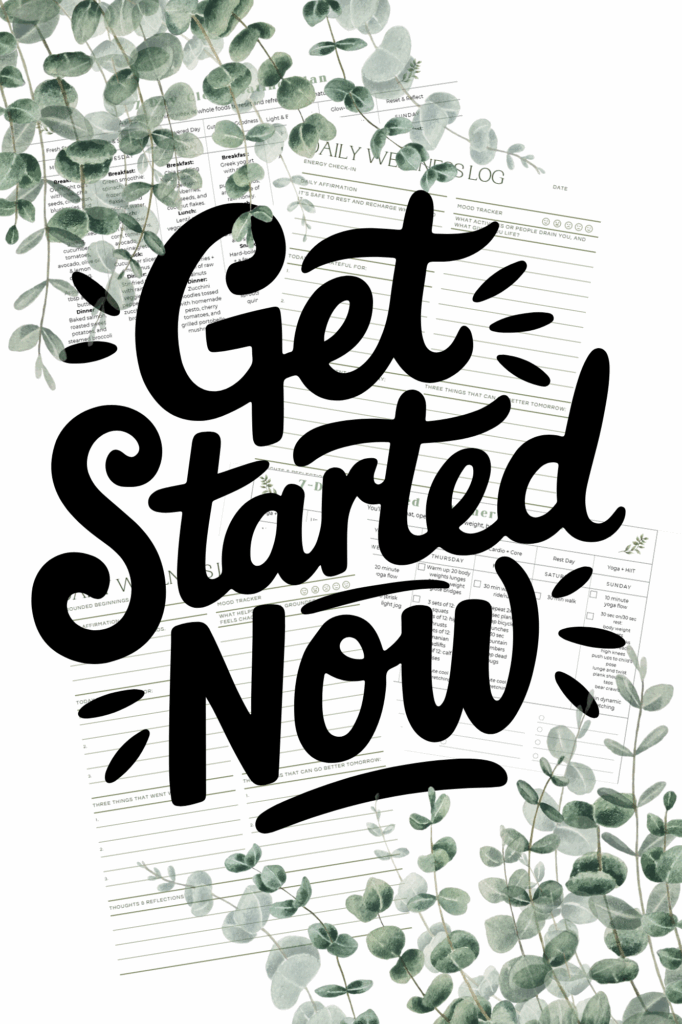
Winding Down: Mindful Living Is Your Superpower
You don’t need to move to a cabin or meditate for hours. Mindful living is about showing up fully in your actual life—right here, right now.
Your body heals when you live with intention
Your decisions get better when you slow down
Your relationships grow when you’re present
Your whole life shifts when you choose today
✨ So… how can you be more mindful in this moment?
Drop a comment—I’d love to hear what mindful living looks like for you today.
Psalm 16:11,
Kirsten
References
Epel, E. S., Blackburn, E. H., Lin, J., Dhabhar, F. S., Adler, N. E., Morrow, J. D., & Cawthon, R. M. (2004). Accelerated telomere shortening in response to life stress. Proceedings of the National Academy of Sciences, 101(49), 17312–17315. https://doi.org/10.1073/pnas.0407162101
Holt-Lunstad, J., Smith, T. B., & Layton, J. B. (2015). Social relationships and mortality risk: A meta-analytic review. PLOS Medicine, 7(7), e1000316. https://doi.org/10.1371/journal.pmed.1000316
Tang, Y. Y., Hölzel, B. K., & Posner, M. I. (2015). The neuroscience of mindfulness meditation. Nature Reviews Neuroscience, 16(4), 213–225. https://doi.org/10.1038/nrn3916
Weger, H., Castle Bell, G., Minei, E. M., & Robinson, M. C. (2014). The relative effectiveness of active listening in initial interactions. International Journal of Listening, 28(1), 13–31. https://doi.org/10.1080/10904018.2013.813234

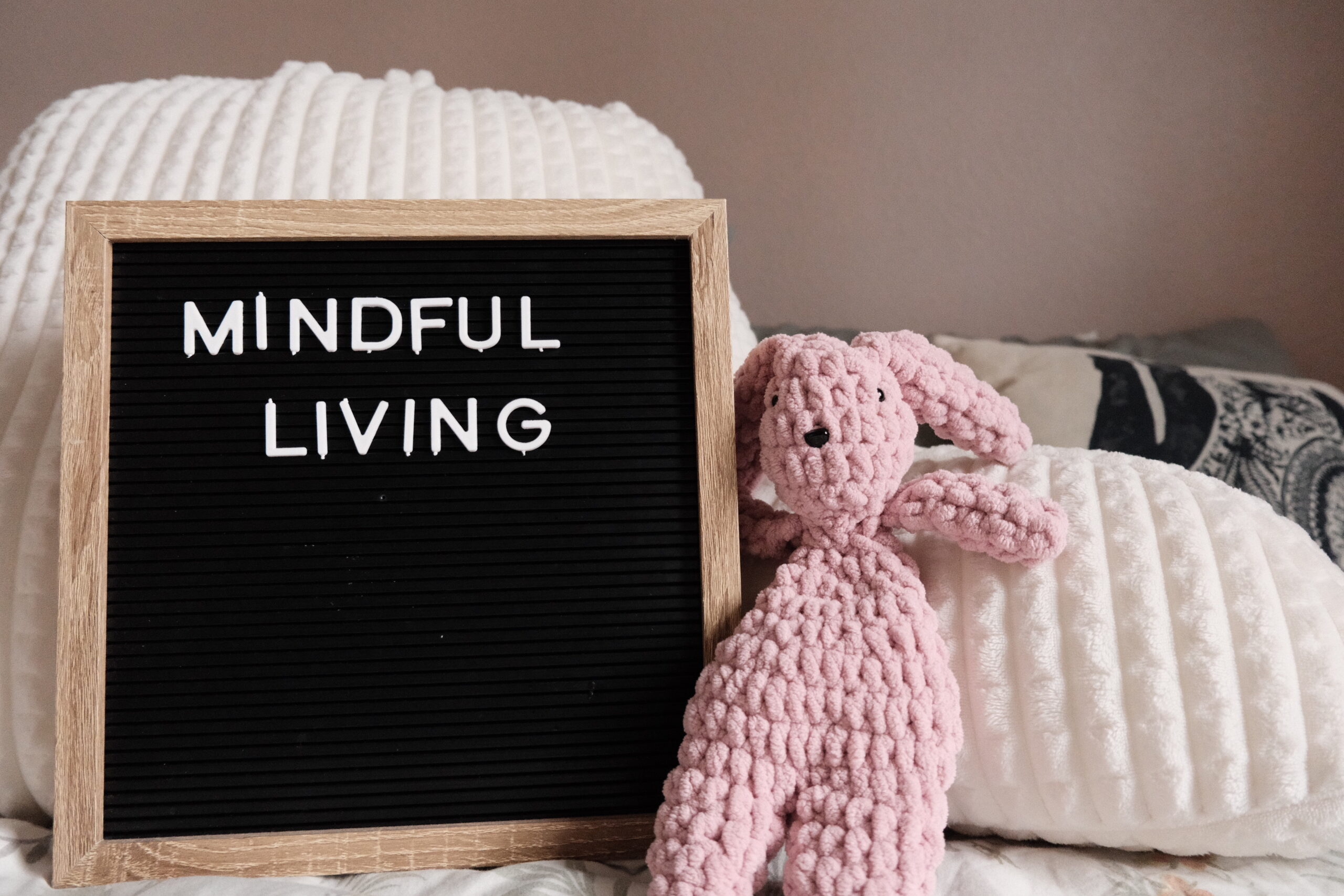
Leave a Reply